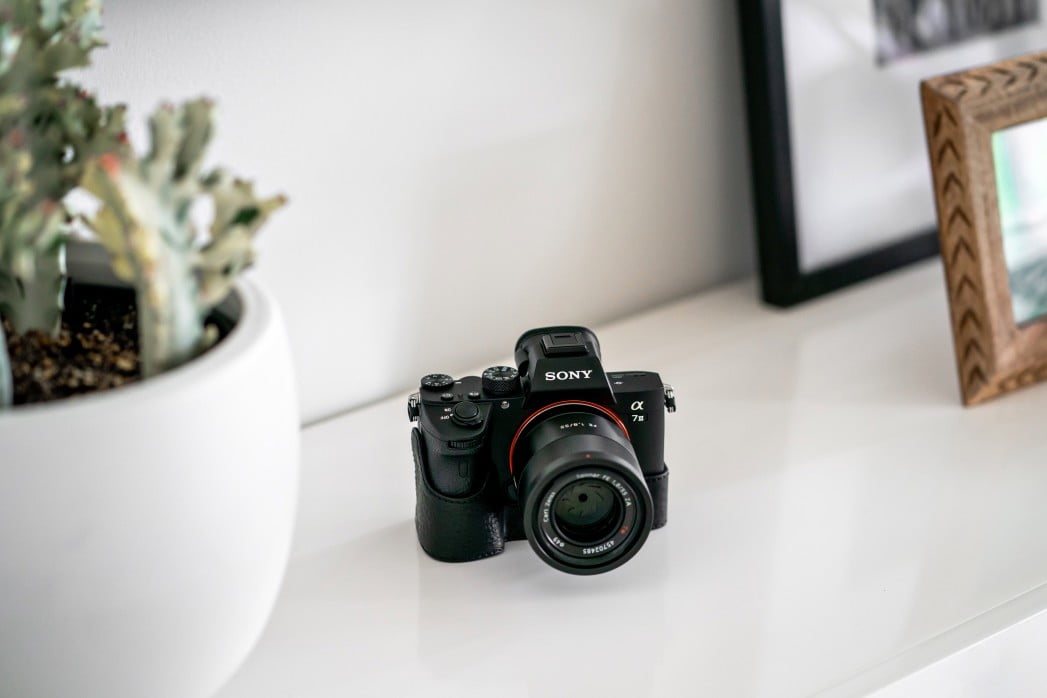If you are shipping for a new camera, you may be comparing CMOS vs CCD digital camera sensors. The best digital cameras, after all, tend to include one of these image sensor types. Keep reading to learn all about the differences between the two image sensors.
KEY TAKEAWAYS:
- Image sensors tend to fall into one of two types – CMOS sensors and CCD sensors.
- CMOS sensors are cheap to manufacture and, as such, are found in nearly any gadget that features a camera. Most consumer-grade digital cameras also feature a CMOS sensor.
- CCD sensors are more sensitive to light and more expensive to manufacture, so they are reserved for professional-grade still and video cameras.
Differences Between CMOS and CCD Digital Camera Sensors
Generally speaking, image sensors fall into two categories: CMOS and CCD. CMOS sensors, which stands for Complimentary Metal Oxide Semiconductor, are found in the vast majority of consumer-grade still photography cameras, as they are inexpensive to manufacture while still delivering professional results. CMOS image sensors transform light particles into charged electrons, which are then transformed into images. CMOS sensors tend to resemble any garden variety microprocessor chip. Due to their low cost, you will almost always find CMOS sensors when comparing compact cameras.
CCD image sensors, which stands for charge-coupled device, is a specialized chipset that works somewhat differently from CMOS sensors. Light and electrons are transported across the chip with little to no distortion and a low noise ratio, which creates a better image quality. For this reason, CCD image sensors are found in high-grade still cameras and many professional-grade video cameras. If you are comparing a cell phone camera to a digital camera, you will always find a CMOS chip in mobile phones, whereas the most expensive digital cameras may include a CCD sensor.
Light Sensitivity
CCD sensors are more sensitive to light than CMOS sensors, thanks to the nature of the design. Each pixel of a CMOS sensor is surrounded by power-giving transistors and as light hits the sensor, some of the light particles accidentally hit a transistor instead. The end result? A slightly reduced light level.
Flexibility
CMOS sensors can fit nearly anywhere and can be manufactured in a multitude of shapes to fit nearly any device. This is why you will find CMOS image sensors in computers, tablets, phones, and just about anything else that requires a camera. CCD sensors, on the other hand, are more specialized.
Cost
As previously mentioned, CMOS sensors are budget-friendly, thanks to being readily available and cheap to manufacture. CCD image sensors tend to be much more expensive, which is why you typically find them in professional-grade cameras.
Insider Tip
CMOS sensors are by no means lesser than CCD sensors, as the image sensor is only one component that goes into the final product.
F.A.Q.S
Is CCD always better than CMOS?
Not necessarily, as it depends on the use case scenario. Though the digital signal imparted by the CCD sensor features less noise than a CMOS sensor, many other factors can impact the image quality, such as the electrical signal, light sensitivity, and whether or not the camera has a rolling shutter.
Is CMOS catching up to CCD?
CMOS sensors are catching up to CCD sensors, as manufacturers are constantly making strides to improve the technology. Modern digital images made with a CMOS sensor often rival even a decent CCD imaging sensor.
Do phones use CMOS or CCD?
Nearly every smartphone uses CMOS image sensor technology, as the tech is smaller and cheaper to produce.
STAT: “Mohamed M. Atalla and Dawon Kahng invented the prototype sensor that eventually became CMOS at Bell Labs in 1959.” (source)



































![Best Point and Shoot Camera in [year] ([month] Reviews) 27 Best Point and Shoot Camera in 2026 (January Reviews)](https://www.gadgetreview.dev/wp-content/uploads/Nikon-Coolpix-B500.jpg)
![Best Underwater Camera in [year] ([month] Reviews) 28 Best Underwater Camera in 2026 (January Reviews)](https://www.gadgetreview.dev/wp-content/uploads/best-underwater-camera-image.jpg)
![Best Digital Cameras in [year] ([month] Reviews) 29 Best Digital Cameras in 2026 (January Reviews)](https://www.gadgetreview.dev/wp-content/uploads/what-is-resolution-on-digital-camera-1.jpg)
![Best Digital Camera Docking Stations in [year] 30 Best Digital Camera Docking Stations in 2026](https://www.gadgetreview.dev/wp-content/uploads/best-digital-camera-docking-stations-image.jpg)
![Best Vlogging Camera in [year] ([month] Reviews) 31 Best Vlogging Camera in 2026 (January Reviews)](https://www.gadgetreview.dev/wp-content/uploads/best-vlogging-camera-image.jpg)
![Best Mirrorless Camera in [year] ([month] Reviews) 32 Best Mirrorless Camera in 2026 (January Reviews)](https://www.gadgetreview.dev/wp-content/uploads/best-mirrorless-camera-image.jpg)
![Best GoPro in [year] ([month] Reviews) 33 Best GoPro in 2026 (January Reviews)](https://www.gadgetreview.dev/wp-content/uploads/best-gopro-image.jpg)
![Best Digital Camera Tripods in [year] 34 Best Digital Camera Tripods in 2026](https://www.gadgetreview.dev/wp-content/uploads/best-digital-camera-tripods-image.jpg)
![Best Canon Digital Cameras in [year] 35 Best Canon Digital Cameras in 2026](https://www.gadgetreview.dev/wp-content/uploads/best-canon-digital-cameras-image.jpg)
![Best Polaroid Digital Cameras in [year] 36 Best Polaroid Digital Cameras in 2026](https://www.gadgetreview.dev/wp-content/uploads/best-polaroid-digital-cameras-image.jpg)
![Best Small Digital Camera Cases in [year] 37 Best Small Digital Camera Cases in 2026](https://www.gadgetreview.dev/wp-content/uploads/best-small-digital-camera-case-image.jpg)
![Best Digital Camera USB Cables in [year] 38 Best Digital Camera USB Cables in 2026](https://www.gadgetreview.dev/wp-content/uploads/best-digital-camera-usb-cable-image.jpg)
![Best Digital Camera Bags in [year] 39 Best Digital Camera Bags in 2026](https://www.gadgetreview.dev/wp-content/uploads/best-digital-camera-bag-image.jpg)
![Best Sony Digital Cameras in [year] 40 Best Sony Digital Cameras in 2026](https://www.gadgetreview.dev/wp-content/uploads/best-sony-digital-cameras-image.jpg)
![Best Panasonic Digital Cameras in [year] 41 Best Panasonic Digital Cameras in 2026](https://www.gadgetreview.dev/wp-content/uploads/best-panasonic-digital-cameras-image.jpg)
![Best Digital Camera Accessories in [year] 42 Best Digital Camera Accessories in 2026](https://www.gadgetreview.dev/wp-content/uploads/best-digital-camera-accessories-image.jpg)
![Best Kodak Digital Cameras in [year] 43 Best Kodak Digital Cameras in 2026](https://www.gadgetreview.dev/wp-content/uploads/best-kodak-digital-cameras-images.jpg)
![Best Video Cameras in [year] ([month] Reviews) 44 Best Video Cameras in 2026 (January Reviews)](https://www.gadgetreview.dev/wp-content/uploads/best-video-cameras-image.jpg)
![Best Compact Cameras in [year] 45 Best Compact Cameras in 2026](https://www.gadgetreview.dev/wp-content/uploads/best-compact-camera-image.jpg)
![Best Digital Cameras with Wifi in [year] 46 Best Digital Cameras with Wifi in 2026](https://www.gadgetreview.dev/wp-content/uploads/best-digital-camera-with-wifi-image.jpg)



















